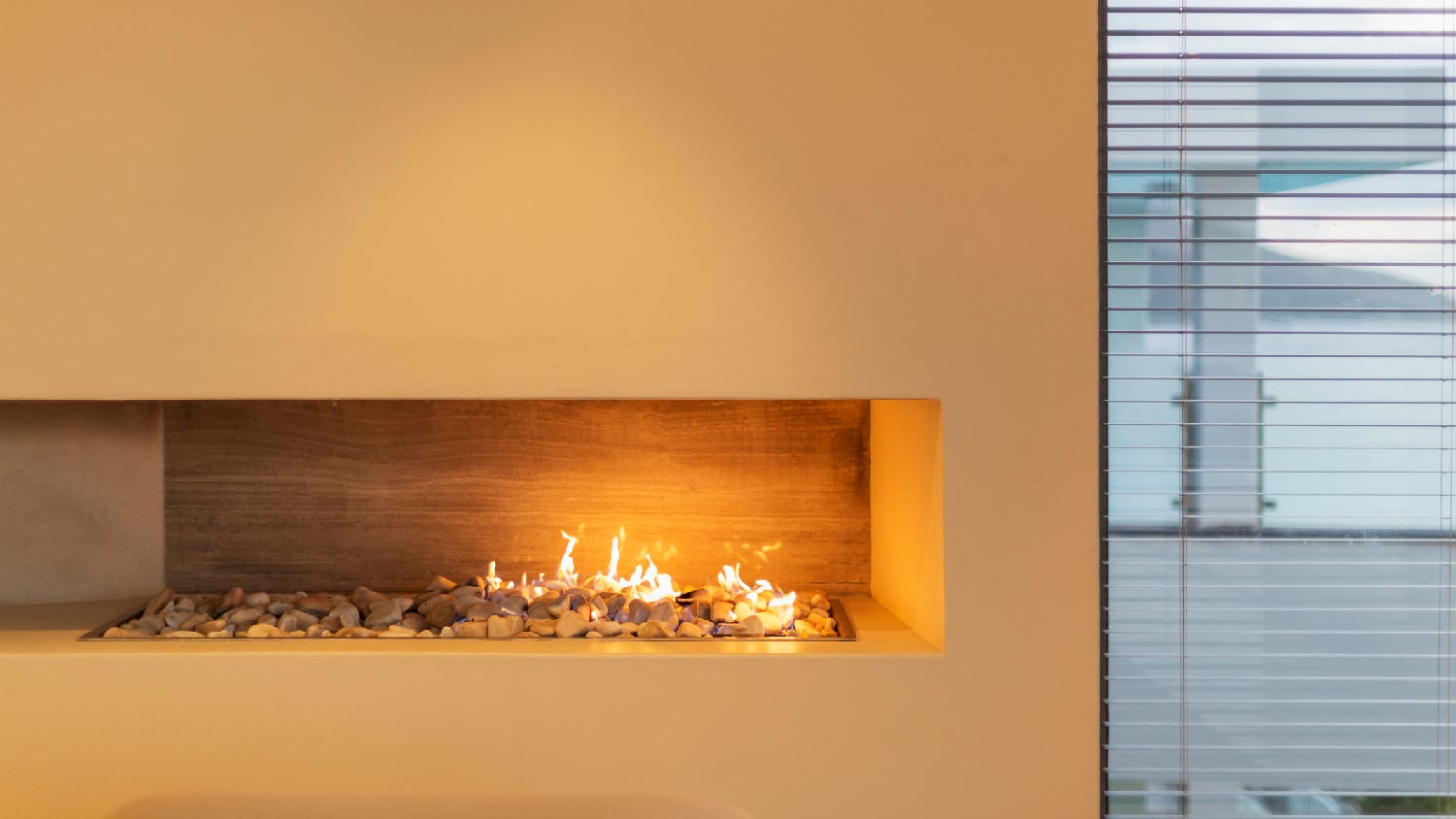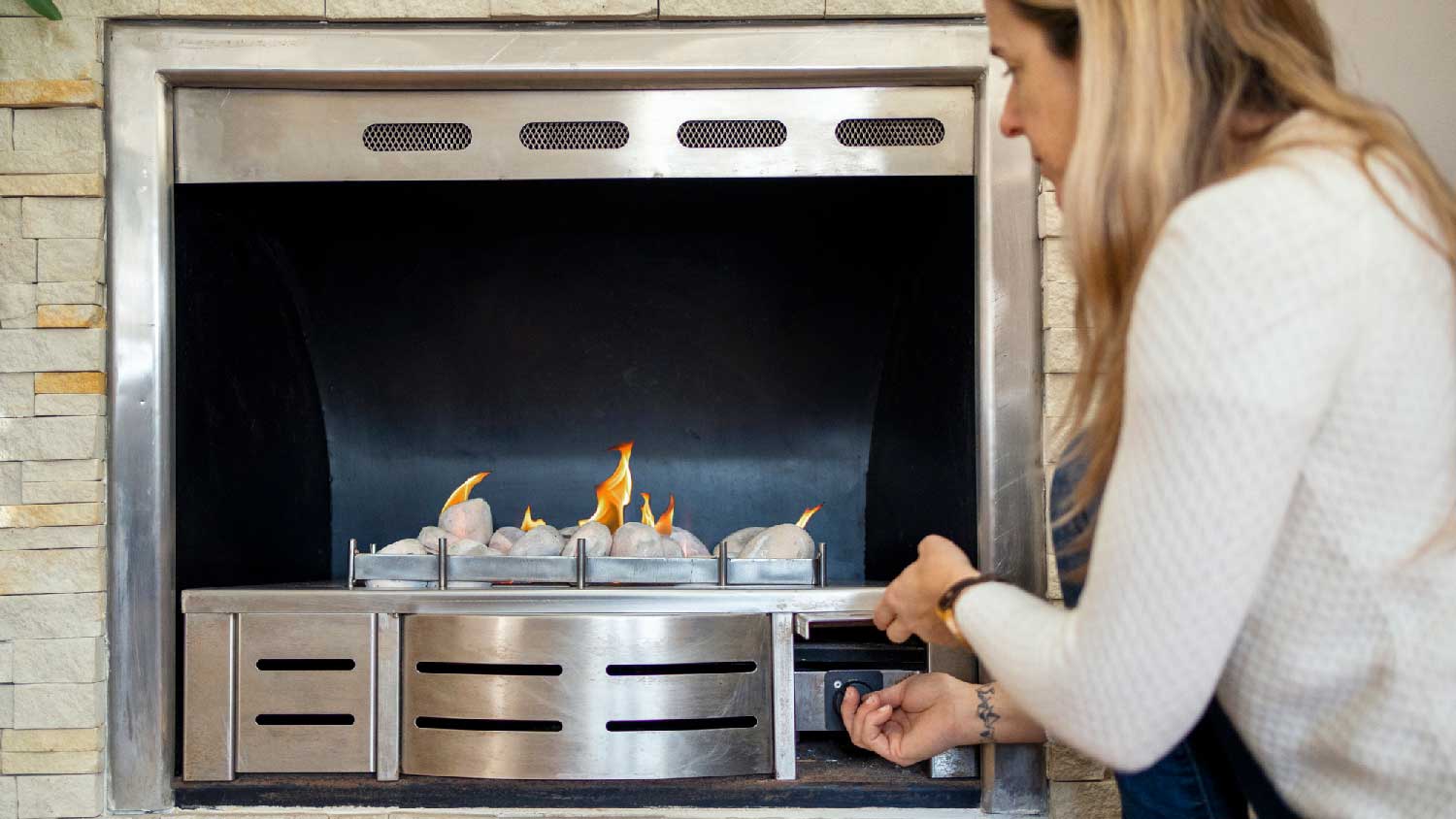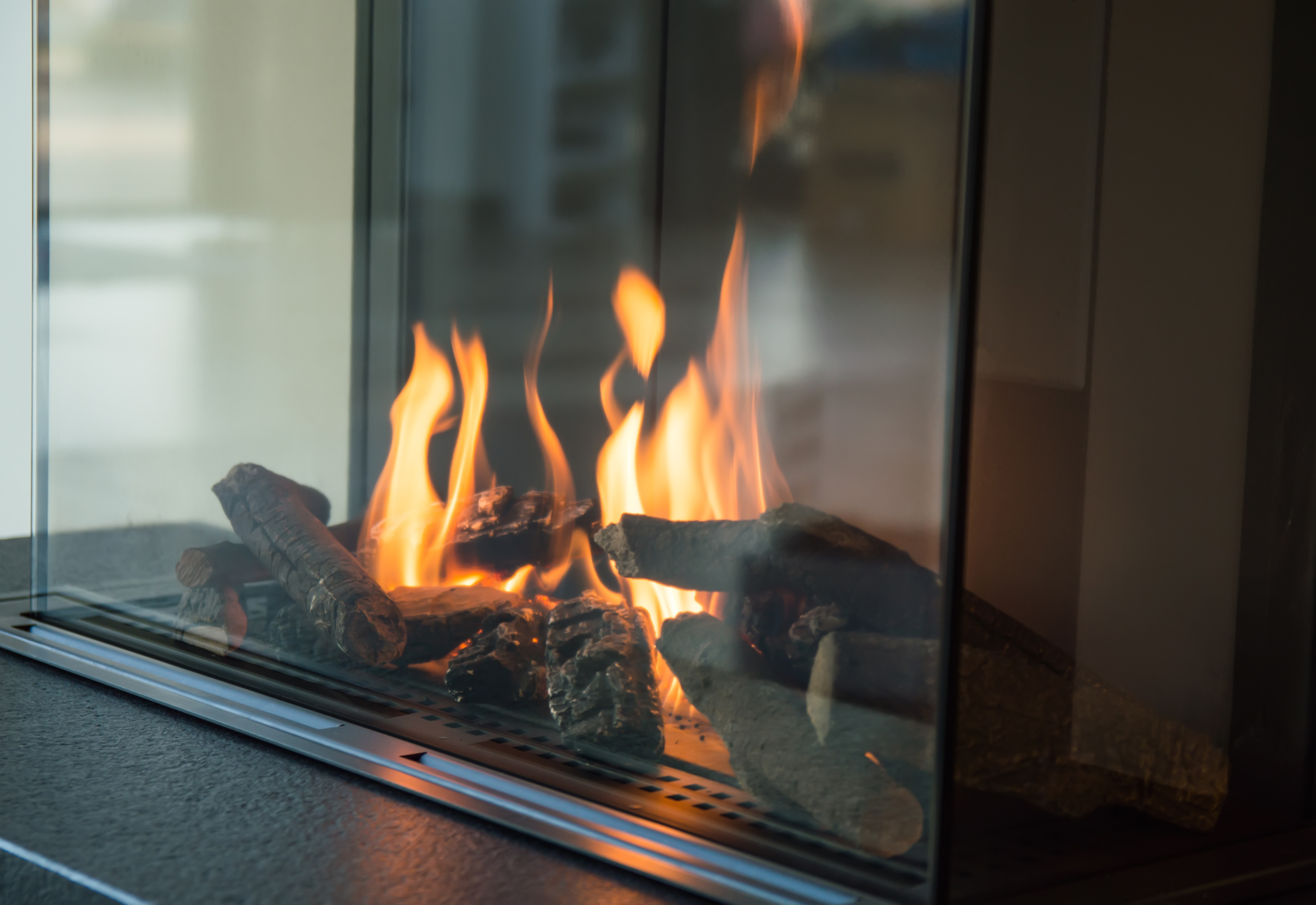
Bioethanol fireplaces are a chimney- and vent-free way to enjoy a real-flame fire in your home. Keep reading to find out how much ethanol fireplaces cost.
Do your homework before you turn up the heat


Gas fireplaces use natural gas or propane, and electric fireplaces run on electricity.
A gas fireplace creates more heat and warms larger spaces more effectively.
Meanwhile, an electric fireplace is more efficient and easier to maintain.
Gas fireplaces are pricier to install than electric fireplaces.
Both types are relatively safe, but with gas fireplaces, there’s a risk of carbon monoxide entering your home.
Cozying up in front of a crackling fire is one of the most comforting ways to spend a chilly winter night. Unfortunately, wood-burning fireplaces require a steady supply of firewood and create a sooty mess. However, gas and electric fireplaces are cleaner and more energy efficient, making them a compelling alternative to traditional fireplaces. Below, you can learn more about gas versus electric fireplaces, including the pros, cons, and costs of both.
When it comes to gas fireplaces versus electric fireplaces, the main difference is the fuel source. While gas fireplaces run on natural gas or propane, electric models use electricity. There are other differences, too: Gas fireplaces generate more heat output and produce real flickering flames unlike electric fireplaces, but electric models are cleaner and easier to maintain.

Gas fireplaces burn natural gas or propane to heat up a room. They generate heat quickly and can warm larger spaces than electric fireplaces. There are two main types of gas fireplaces: vented and ventless. A vented gas fireplace expels combustion byproducts outside through a chimney or vent, while ventless models release these byproducts inside your home (and, as a result, don’t require a chimney or vent).
| Pros | Cons |
|---|---|
| Can heat larger spaces | More expensive to install |
| Creates real flames | Can produce carbon monoxide |
| Easy to use and customize | Requires more maintenance |
Best for:
Anyone who prefers a natural flame aesthetic
Those looking for a powerful heating solution that can warm up large rooms
People who want a supplemental home heat source
Gas fireplaces are more powerful than their electric counterparts, which makes them more effective at heating big areas. If you have an open-plan home or a large living room, a gas fireplace can provide more consistent heat throughout the space.
Unlike electric fireplaces, gas fireplaces produce real flames. If you’re trying to recreate the look of a traditional wood-burning fire (without the mess), then a gas fireplace is a good alternative.
Gas fireplaces are also easy to use. In many cases, you can light a gas fireplace with the push of a button or the click of a remote. With some models, you can even choose the flame height, adjust the heat output, and choose realistic-looking logs or glass beads to customize the look of your fireplace.
Compared to electric fireplaces, one of the primary downsides of gas fireplaces is the higher price tag. On average, installing a gas fireplace costs $2,500 to $10,000, while an electric fireplace costs $200 to $2,200. If you need to run a new gas line, you could pay even more.
It’s also important to consider the safety risks of gas fireplaces. If installed incorrectly or poorly maintained, a gas fireplace can release carbon monoxide into your home. To keep your family safe, be sure to have a pro install carbon monoxide and smoke detectors throughout your home and test them every month.
Working with gas can be very dangerous and even harmful to your health. Only attempt gas projects yourself if you have the experience and credentials to do so safely. Otherwise, let the professionals handle these jobs.
Finally, while gas fireplaces don’t require as much upkeep as wood-burning models, they’re still more high-maintenance than electric fireplaces. A standard gas fireplace maintenance routine involves cleaning the doors, vacuuming the interior, inspecting the paint, and hiring a professional for an annual inspection and chimney cleaning.

Electric fireplaces use electricity to heat an area within your home. They don’t require a chimney or vent, making them easy to install in all types of properties, including apartments and condos. Electric fireplaces are also energy efficient and don’t release emissions into the atmosphere. However, they aren’t as powerful as gas fireplaces, so they won’t heat big spaces as effectively.
| Pros | Cons |
|---|---|
| Lower installation cost | Doesn’t produce authentic flames |
| Energy efficient | Lower heating capacity |
| Minimal maintenance required | Takes longer to heat a room |
Best for:
People who want an eco-friendly, energy-efficient fireplace
Individuals who only need to heat a small space
Homes that don’t have an existing gas line
As we’ve mentioned, an electric fireplace is less expensive than a gas fireplace. The installation costs are often lower, as well, since you don’t have to connect the fireplace to a gas line or vent it through a chimney. Installing an electric fireplace only requires you to plug it into a power outlet.
Another perk of electric fireplaces is their energy efficiency. They convert nearly all of the energy they use into heat, and they don’t burn fuel or lose heat through a chimney. And since they don’t produce emissions, they’re better for the environment as well.
Electric fireplaces also require less maintenance than gas models. To keep yours in good condition, you should regularly clean the inside and outside of the fireplace and hire a local fireplace pro to occasionally test the wiring and bulbs.
For many people, the main drawback of an electric fireplace is the lack of real flames. Instead, they often use lights to mimic the appearance of a flickering fire.
In addition, electric fireplaces don’t generate as much heat as their gas counterparts. Because of this, they’re best suited for heating smaller spaces. Also, due to their lower heating capacity, electric fireplaces take longer to warm up a room.

Still unsure which type of fireplace you should buy? Here’s how electric versus gas fireplaces compare in several key categories.
Due to the higher unit cost and more complex installation process, gas fireplaces are pricier to install than electric fireplaces. Operating costs depend on the size of your fireplace and fuel prices in your location, but electric fireplaces cost less to run than gas models in nearly every instance.
If you want your fireplace to produce realistic flames, you’ll want to invest in a gas fireplace. Electric models create the illusion of a burning fire, but it’s not an authentic one.
Both gas and electric fireplaces are energy efficient. However, electric models win this category because they waste very little energy and use less energy than gas fireplaces. Also, unlike vented gas fireplaces, electric models don’t lose any heat through a chimney or vent.
Neither type needs much fireplace maintenance, but overall, electric fireplaces require less upkeep than gas fireplaces.
From average costs to expert advice, get all the answers you need to get your job done.

Bioethanol fireplaces are a chimney- and vent-free way to enjoy a real-flame fire in your home. Keep reading to find out how much ethanol fireplaces cost.

The average fireplace installation cost is $2,438, but prices vary depending on the type and size of the fireplace. Calculate your costs with our guide.

This guide shares information about the cost to remove a gas fireplace, including the average price to additionally remove the breast, stack, and chimney flue as well as which experts will be needed to complete the project.

Keeping your gas fireplace lit shouldn’t be a struggle—but sometimes, it is. If so, you might wonder: Why does my gas fireplace keep going out? Let us explain.

Gas fireplaces may emit a sulfuric or burning plastic smell from time to time. Learn why your gas fireplace smells like gas or plastic and what to do next.

Find out if you really need a chimney to install a fireplace in your home. This guide helps you understand your options, such as a ventless fireplace, when choosing the right fireplace for your home if you don't have a chimney.